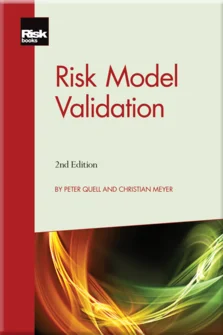Introduction
Introduction
Introduction
Basics of Quantitative Risk Models
Usage of Statistics in Quantitative Risk Models
How Can a Risk Model Fail?
The Concepts of Model Risk and Validation
Model Risk Frameworks
Validation Tools
Regulation
The Short-term Perspective
A Benchmark Model for Market Risk
The Medium-term Perspective
Modelling and Simulation
Data
Model Results
Conclusion
The last decade of the 20th century and the first decade of the 21st century saw the use of quantitative risk models (QRMs) become a cornerstone of financial regulation. Financial institutions now have to determine capital buffers based on increasingly complex modelling techniques. The computation and allocation of capital buffers to business lines has come to share more features with the solution of multi-dimensional optimisation problems than with classical business model analysis. As a consequence, the Turner review (FSA, 2009) speculated that many in top management face difficulties in assessing and exercising judgement over the risks being taken by their institutions. According to the review, these difficulties contributed to one of the worst crises that our financial system has ever experienced.
Of course, the Turner review also mentioned many other factors that may have played a prominent role, such as the heightened complexity of the structured credit market, the fact that financial institutions took on too much leverage and the role of the rating agencies. However, this global financial crisis definitely emphasised the need for rigorous and critical analysis of the use
Copyright Infopro Digital Limited. All rights reserved.
As outlined in our terms and conditions, https://www.infopro-digital.com/terms-and-conditions/subscriptions/ (point 2.4), printing is limited to a single copy.
If you would like to purchase additional rights please email info@risk.net
Copyright Infopro Digital Limited. All rights reserved.
You may share this content using our article tools. As outlined in our terms and conditions, https://www.infopro-digital.com/terms-and-conditions/subscriptions/ (clause 2.4), an Authorised User may only make one copy of the materials for their own personal use. You must also comply with the restrictions in clause 2.5.
If you would like to purchase additional rights please email info@risk.net











